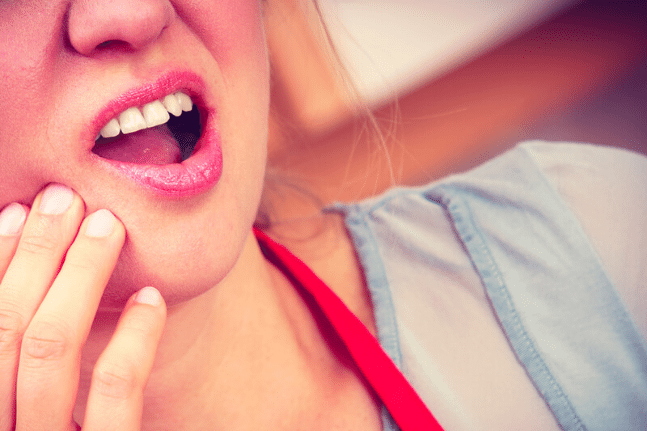Is it TMJ or TMD?
I’ve got TMJ! – well yes, you do, but so do all of your friends. Often, jaw pain, clicking, grinding and clenching is labelled as “TMJ” – which is actually just the name of the jaw joint, the Temporomandibular Joint. Long name, yep, but the joint is the union of the Temporal bone of the skull and the Mandible (jaw), so it’s pretty logical.
We have two TMJs, one on either side of our face just in front of our ear. You can feel it move by putting your hands towards the back of your cheeks, in front of your ears, and opening and closing your mouth.
TMD can be associated with headaches, neck pain and ear ache, so it can be quite debilitating.
The TMJ is a pretty special joint, because it moves in two ways. First of all, the jaw bone slides forward on our skull when opening our mouth, and then it hinges down to give us a bit of a wider mouth to fit more burger into.
In order to facilitate this glide/hinge movement and prevent wear and tear, the joint contains a disc (similar to the ones sitting between our vertebrae) – a soft squishy structure designed to provide cushioning to the joint.
When people say they have TMJ, what they probably mean is that they have TMD, which stands for Temporomandibular Dysfunction. TMD can be associated with headaches, neck pain and ear ache, so it can be quite debilitating.
TMD can be caused by a variety of things:
- Just like other joints in our body, overuse or over stretching can cause sprains to the ligaments that hold the joint together. Dental surgery where the mouth is held open for a long time (such as removal of wisdom teeth) can cause pain and swelling of the TMJ in the days following the surgery
- Disc injuries can happen within the TMJ. As the jaw moves, the disc needs to as well. if the disc has been damaged by trauma, such as being hit in the head with a ball, by aggressive dental surgery to stubborn wisdom teeth or even chomping into something really big and hard like an apple, the disc can get stuck during jaw movement. This will give a loud “click” noise upon opening and closing, as well as sometimes causing the jaw to “lock” in place.
- Stress! When we’re stressed, we will sometimes subconsciously clench our jaws (hold our teeth together tightly) or even grind our teeth. The muscles that control our jaw are some of the strongest-for-their-size in the human body. If we’re constantly using these muscles and compressing the jaw joint by squeezing it too tightly, the ligaments, muscles and disc can become worn, tight, swollen and sore.
Management strategies of TMD include the following:
- Proper diagnosis! A dentist, osteopath, physiotherapist or GP will be able to identify the cause of your jaw pain or dysfunction and guide you to the best line of treatment.
- Stress reduction. If your dysfunction is caused by clenching or grinding, removing the cause of the problem will prevent recurrence. Speak to your osteopath, psychologist or GP about ways to manage stress.
- Manual therapy where appropriate. If you have tight muscles around your jaw, sore ligaments due to a previous sprain or dental surgery, then manual therapy can assist in making your jaw movement easier and less painful. Speak to your osteopath or physiotherapist for their opinion of your jaw complaint.
Until next time,
Claire








